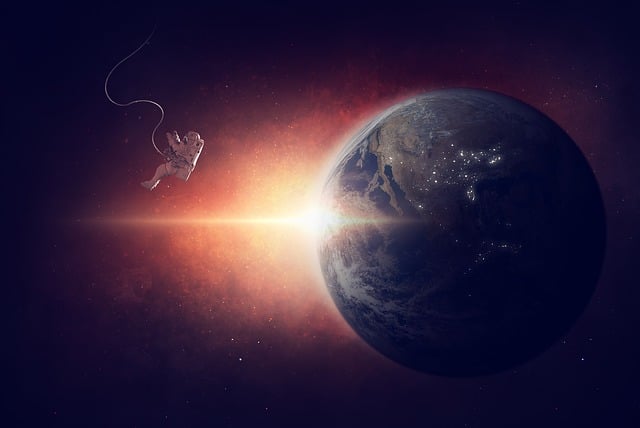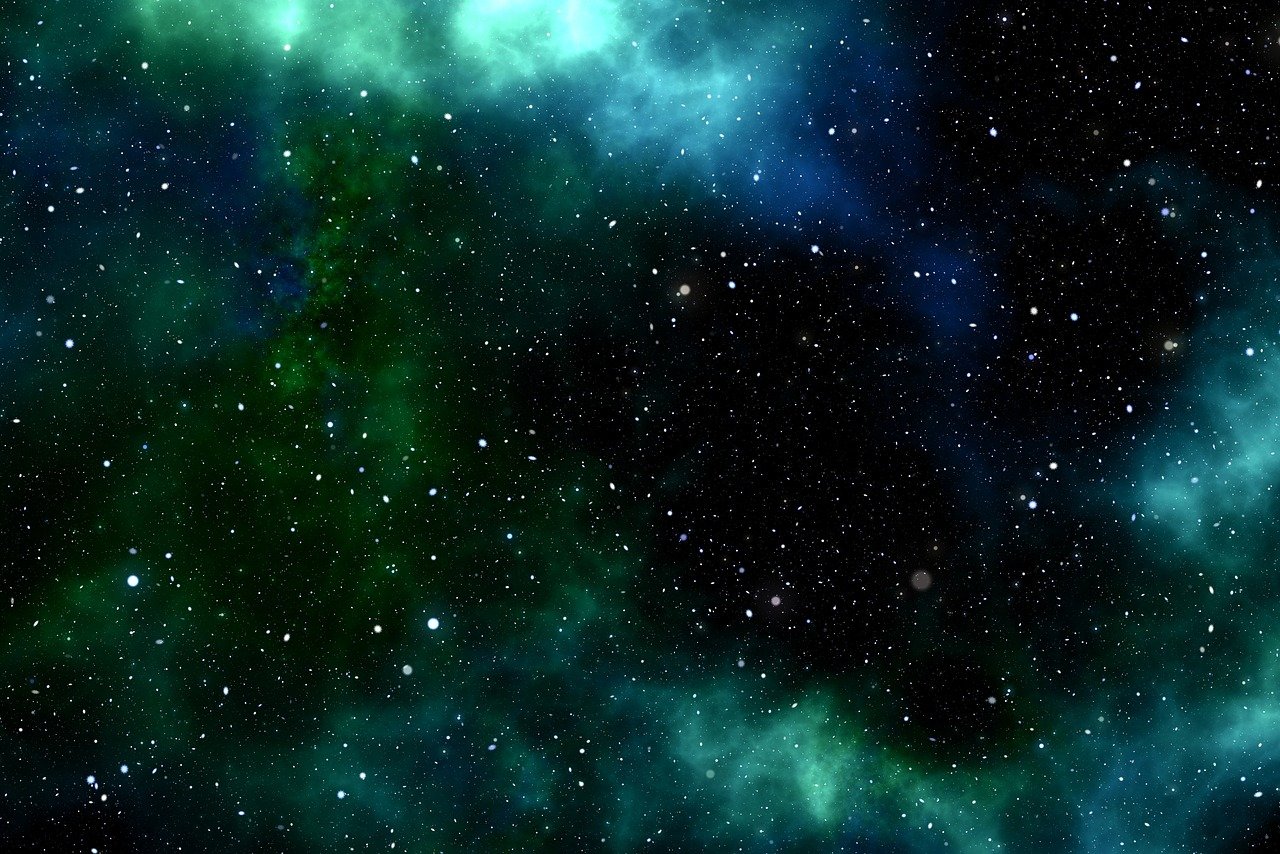Astronomy - The Universe

Table of Contents
What is Astronomy
Astronomy is the science that studies the universe. It deals with the properties of objects in space and the laws under which the universe operates. It is the study of celestial bodies and their interaction with all other celestial bodies. Celestial bodies are stars, planets, satellites, comets, asteroids, meteors and galaxies which are found in space.
About The Universe
The universe is everything. It includes all of space, and all the matter and energy that space contains. There is nothing outside the universe, because anything that exists is automatically included in the definition of the universe.
Asteroids, comets, planets and their many moons are a part of the Universe including Earth and its moon.
The planets orbit the Sun, which is a star, one of many stars, most of the stars have their own planets known as exoplanets.
The Sun and all the objects that orbit it sit in our Solar system, the Sun sits in the centre of our solar system and it’s the largest object within.
The solar system is located in one of the smaller arms of our home galaxy, ‘The Milky Way’, known as the Orion Arm.
The Milky Way is our home galaxy, however there are multiple galaxies (over 100 billion) within the universe, Our Milky Way has a spiral shape like most other galaxies, however there are also Elliptical, Irregular, and Dwarf shaped galaxies. All objects that are held in our galaxy are all held together by gravity.
How old is the universe?
The universe appears to be about 13.8 billion years old. Scientists arrived at that number by measuring the ages of the oldest stars and the rate at which the universe expands.
Is the universe expanding?
Observations of distant galaxies reveal that all galaxies are, on average, moving away from every other galaxy. Astronomers interpret this motion to mean that the universe itself is expanding.
What are Galaxies?
A galaxy is a system which contains a collection of stars, stellar remnants, interstellar gas, dust, dark matter, and their solar system, which is all held together by gravity.
The word gravity was taken from the greek word ‘galaxias (γαλαξίας)’ meaning ‘Milky’ which is a reference to our galaxy ‘The Milky Way’.
There are more than 200 billion galaxies in the universe, each presenting beautiful structures that can be seen in telescope images taken of the distant universe.
Galaxy’s range in size, from dwarf sized galaxies containing millions of stars to supergiant’s containing trillions of stars, where each galaxy’s stars are orbiting their galaxies’ centre of mass.
Almost every known galaxy has a supermassive black hole in its centre, which also plays a part in determining the galaxy’s characteristics.
Galaxy Categories
In 1926, Edwin Hubble created the Hubble sequence, which gave the four classifications of the galaxies.
Spiral Galaxies– Spiral galaxies have a distinctive shape with spiral arms in a relatively flat disk and a central “bulge”. The bulge has a large concentration of stars.
Elliptical galaxies – They are round, smooth collections of stars, Elliptical galaxies can be almost perfect circles (E0) to very stretched-out ovals (E7).
Lenticular Galaxies – A lenticular galaxy is a type of galaxy intermediate between an elliptical and a spiral galaxy. Lenticular galaxies generally have flat, disk-like shapes.
Irregular galaxies – Irregular galaxies have no identifiable shape or structure to them. They are often chaotic in appearance, without a bulge or any trace of spiral arms.
.
Our Milky Way
The Milky Way is a large spiral galaxy which contains between 100 billion and 400 billion stars. The stars appear across the night sky and look like spilled milk.
The Milky Way galaxy has 4 major spiral arms, which are sights of a strong star formation. There are many more minor spiral arms as well which is where our solar system is located, just outside a spiral arm named the Orion Arm.
It takes our Solar System about 240 million years to complete one orbit of the Milky Way at a speed of approximately 220 km/s.
What is a Local Group?
We know that our planet belongs in the Solar System and that the Solar System is part of the Milky Way.
Our Milky Way also belongs to a galaxy cluster called the Local Group. There are about 80 galaxies in the Local Group. The largest of them is the Andromeda Galaxy, followed by the Milky Way, and the Triangulum Galaxy.
The Local Group belongs to the Virgo Supercluster which is also called the Local Supercluster.
The Virgo Supercluster is part of an even bigger group called the Laniakea Supercluster.
Earth – Solar System – Milky Way Galaxy – Local Group – Virgo Supercluster – Laniakea Supercluster.
Largest Galaxy
The largest known galaxy in our universe is IC 1101
It has an approximate diameter of 6,000,000 light years compared to the diameter of the Milky Way is just 150,000 light-years.
The mass of IC 1101 galaxy is equivalent to 100 trillion stars.
It is a supergiant elliptical galaxy that exists in the centre of a group of galaxies called the Abell 2029.
The distance of the IC 1101 galaxy from the earth is 1100 million light-years.
Brightest Galaxy
The brightest galaxy is WISE J224607.57-052635.0 which was discovered by NAS’s spacecraft in 2015.
WISE is categorized in a group of objects called ‘extremely luminous infrared galaxies (ELIRGs).
The acronym for WISE is ‘wide-field infrared survey explorer’.
The galaxy has a brightness of more than 300 trillion suns.
The main source of the intense light from this galaxy is the supermassive black hole, that exists at its centre and it releases more than 10,000 times more energy compared to our galaxy.
Closest Galaxy
The closest galaxy to the Milky Way is ‘The Andromeda Galaxy’, which is a barred spiral galaxy with a diameter of approximately 2.5 million light-years from Earth.
The Andromeda Galaxy is one of the few visible to the unaided eye, appearing as a milky blur.
Youngest/Oldest Galaxy
The youngest known Galaxy is ‘I Zwicky 18′ which is about 500 million years old compared to our Milky Way galaxy which is almost 12.8 billion years old.
The oldest galaxy is GLASS-z13 which is around 13.4 billion years old.
Good To Know
Dwarf galaxies
Most galaxies in the universe are actually dwarf galaxies.
These are relatively small when compared to other galaxies – roughly one hundredth the size of the Milky Way with only a few billion stars.
A dwarf galaxy is a small galaxy composed of about 1000 up to several billion stars, as compared to the Milky Way’s 200–400 billion stars.
.


